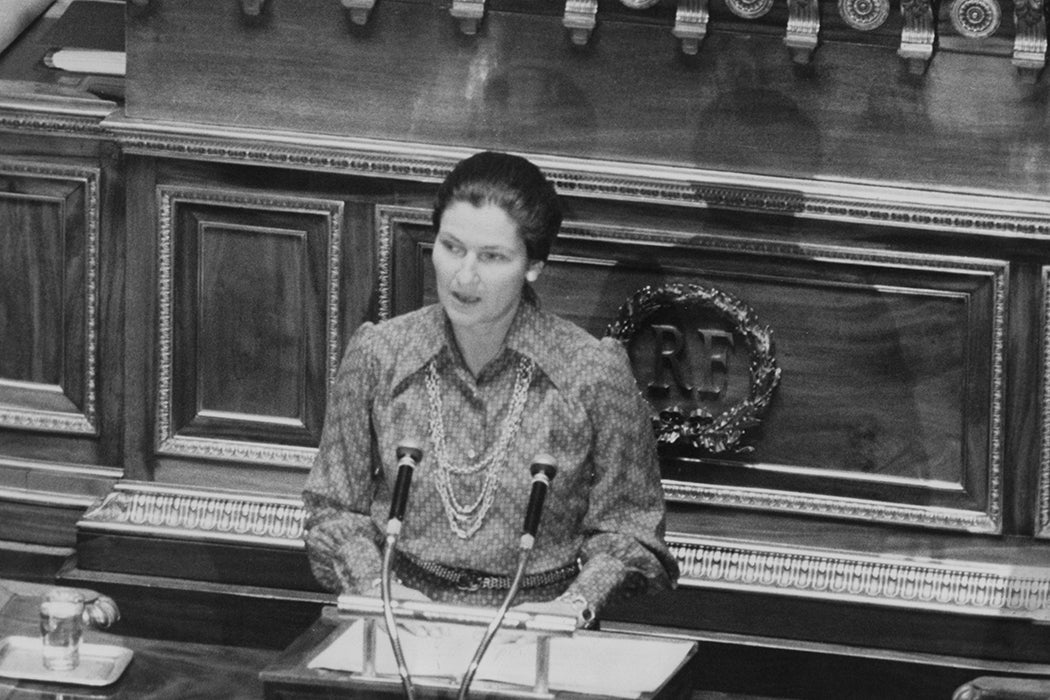On April 5, 1971, during the height of the second-wave feminist movement in the Western world, the French news magazine Le Nouvel Observateur published a radical claim:
One million women in France have abortions every year. Condemned to secrecy, they do so in dangerous conditions, while under medical supervision, this is one of the simplest procedures. Society is silencing these millions of women. I declare that I am one of them. I declare that I have had an abortion. Just as we demand free access to contraception, we demand the freedom to have an abortion.
Three hundred and forty-three signatures were appended to the “manifesto”: 343 French women and citizens who risked their careers and reputations by publicly confessing to having had an illegal abortion. The act of civil disobedience—now known as the “Manifesto of the 343”—was a non-violent refusal to obey a country’s law. It would prove to be one of the bravest acts toward achieving French women’s reproductive rights.
The text of the manifesto was penned by the most obvious choice for the job: French feminist-philosopher Simone de Beauvoir, at the time the country’s most famous woman writer and women’s rights activist. Beauvoir signed the manifesto herself, despite having never been pregnant or having had an abortion. But she had a personal interest in the cause that stemmed from her knowledge of and witness to traumatic experiences within her social circle. Author Violette Leduc, a close friend of Beauvoir’s, also signed the manifesto. Beauvoir was instrumental in arranging the publication of Leduc’s memoirs and autobiographical novels, which depicted Leduc’s near-fatal abortion in gruesome detail. (The struggle to have the subject of abortion appear in print is a point of conflict in the 2013 biographical film Violette, based on Leduc and Beauvoir’s artistic collaboration.)
Beauvoir was also an accomplice in the unlawful and horrifying abortion performed on her friend and casual lover Olga Kosakiewicz, who’d become pregnant from an affair during the Second World War. “The abortionist was a skinny old woman, and Beauvoir and Olga were terrified that she might not be sufficiently conscious of hygiene,” wrote Beauvoir’s biographer Hazel Rowley. These relationships and events spurred Beauvoir to take up the cause of securing free contraception and family-planning resources for women who didn’t have husbands to protect them, sufficient money on which to live, or even a desire to bear children. This would be a major point of discussion in her 1949 treatise The Second Sex: the right of women to refuse socially demanded motherhood.
Weekly Newsletter
There was, of course, crude backlash to the manifesto by anti-feminist factions. “Before we had had time to measure the consequences of this act in our private lives, our initiative had become a success,” writes French writer and historian Claudine Monteil, who signed the manifesto in her youth. “Some of the women ran into problems in their jobs, however, and the church and the government were outraged.”
What the Manifesto of the 343 did achieve, despite the resistance from ultraconservative institutions, was the foundation of what would be called the “Veil Act” (Loi Veil), named after Simone Veil (1927–2017), who served as Health Minister in France. Under the act, officially adopted in January 1975, there would no longer be any legal repercussions for terminating a pregnancy by voluntary abortion during the ten (later fourteen) weeks after conception. This wasn’t the dramatic reform for which Beauvoir and her 342 comrades were hoping, but it was a step in their version of the right direction. It meant that (within limits) underprivileged women didn’t face jail time for decisions surrounding their own bodies.
Support JSTOR Daily! Join our new membership program on Patreon today.







